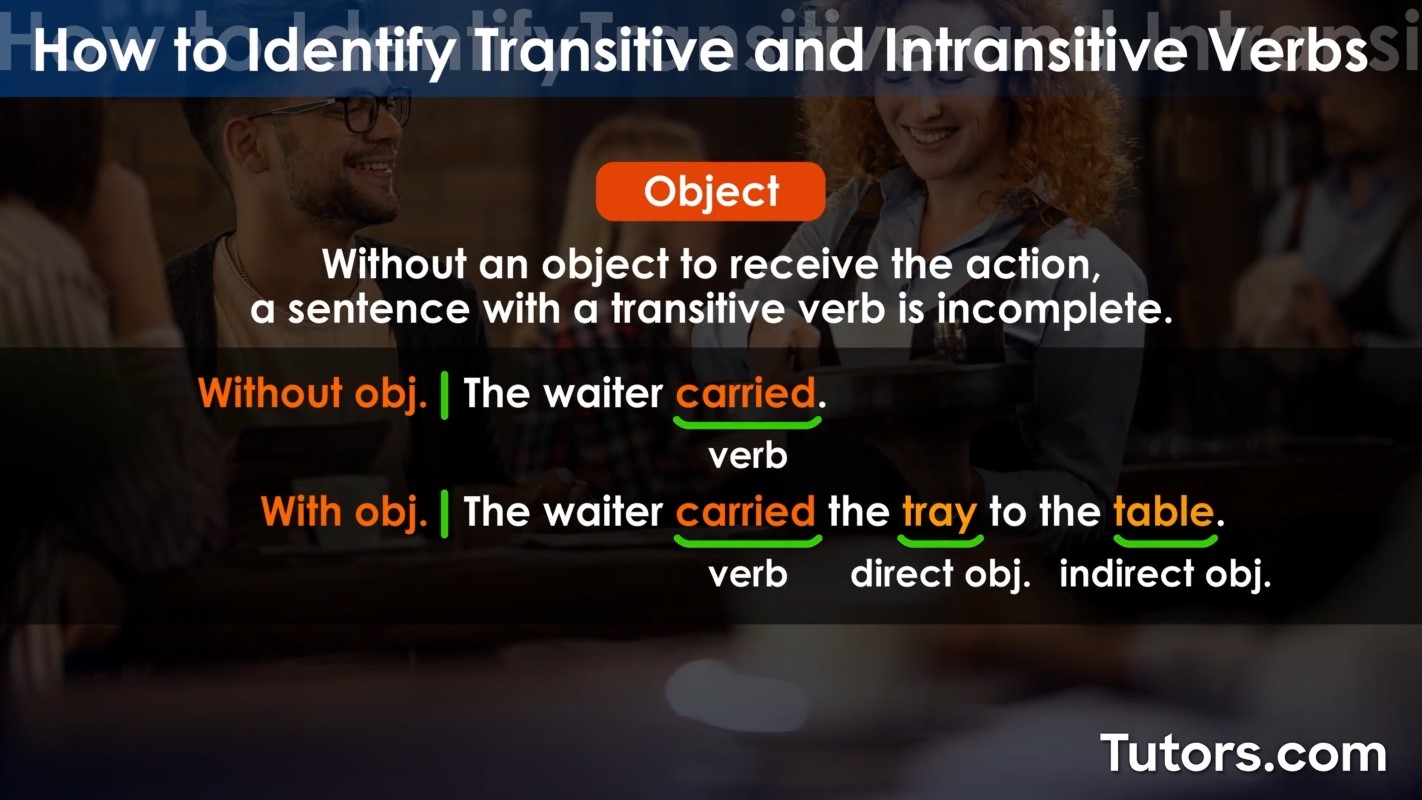Understanding the different types of verbs in the English language is essential for effective communication. One of the key types of verbs is the transitive verb, which requires both a subject and a direct object to complete its meaning. By learning how to identify transitive verbs, you can improve your writing and speaking skills.
Transitive verbs are verbs that require a direct object to complete their meaning. In a sentence with a transitive verb, the action of the verb is done to someone or something. It is important to distinguish transitive verbs from intransitive verbs, which do not require a direct object to complete their meaning.
How to Identify Transitive Verbs
One way to identify transitive verbs is to ask the question “What?” or “Whom?” after the verb in a sentence. If the answer to the question is a noun or pronoun that is directly affected by the action of the verb, then the verb is transitive. For example, in the sentence “She ate an apple,” the verb “ate” is transitive because it has a direct object “an apple” that answers the question “What did she eat?”
Another way to identify transitive verbs is to see if the verb can be followed by a direct object. Transitive verbs can have their action directed towards someone or something, which is represented by the direct object. For example, in the sentence “He threw the ball,” the verb “threw” is transitive because it can be followed by the direct object “the ball.”
Additionally, transitive verbs can sometimes be identified by their ability to be transformed into the passive voice. If a sentence with a transitive verb can be rewritten in the passive voice, with the direct object becoming the subject of the sentence, then the verb is transitive. For example, “The chef made a delicious cake” can be transformed into “A delicious cake was made by the chef,” indicating that “made” is a transitive verb.
It is important to note that not all verbs can be easily classified as transitive or intransitive, as some verbs can function as both depending on the context. However, by practicing and identifying transitive verbs in sentences, you can improve your understanding of the English language and enhance your communication skills.
In conclusion, identifying transitive verbs in sentences is a crucial aspect of grammar and language comprehension. By asking the right questions and recognizing the patterns of transitive verbs, you can enhance your writing and speaking abilities. Practice identifying transitive verbs in sentences to become more proficient in using them correctly in your own communication.
